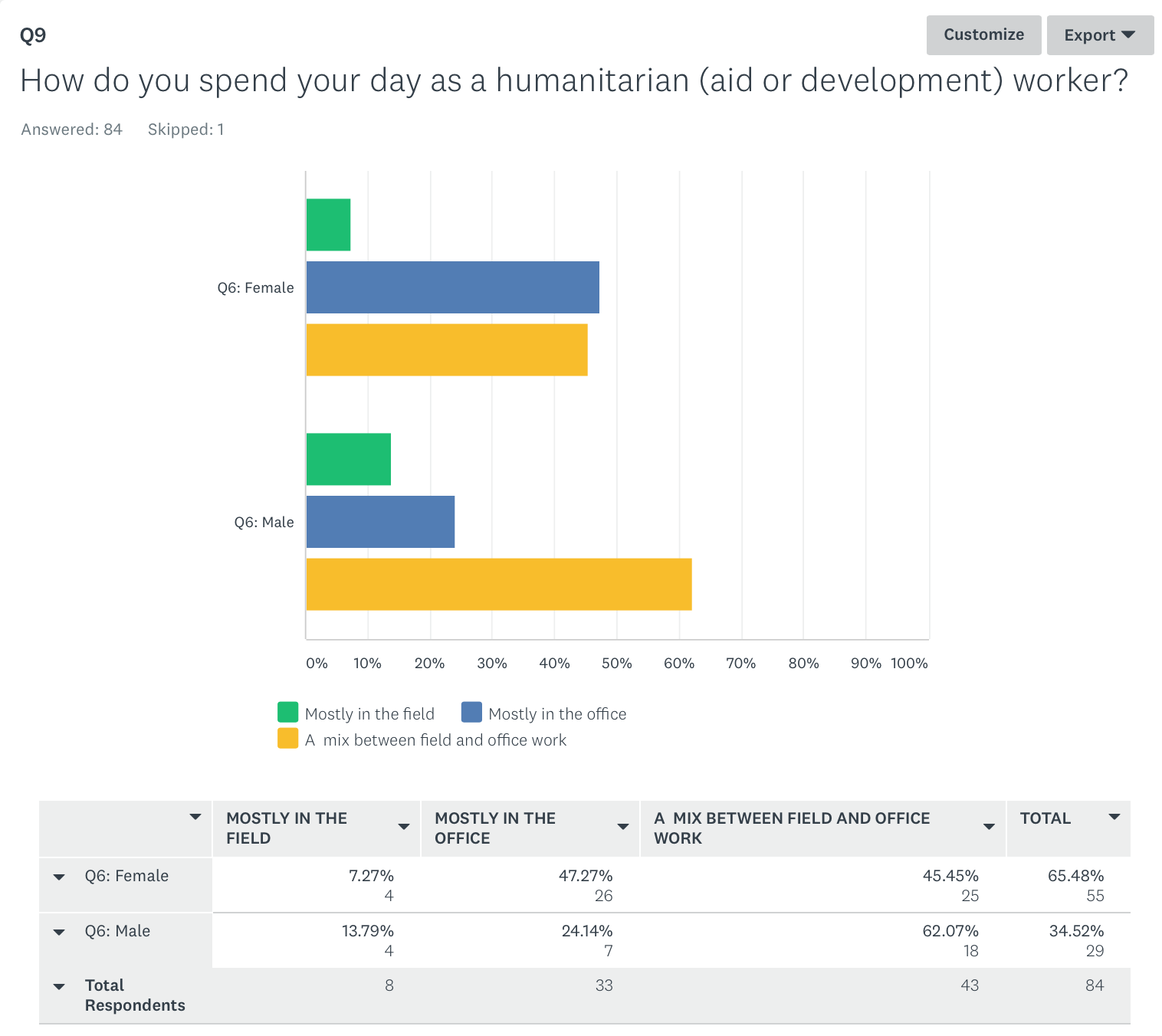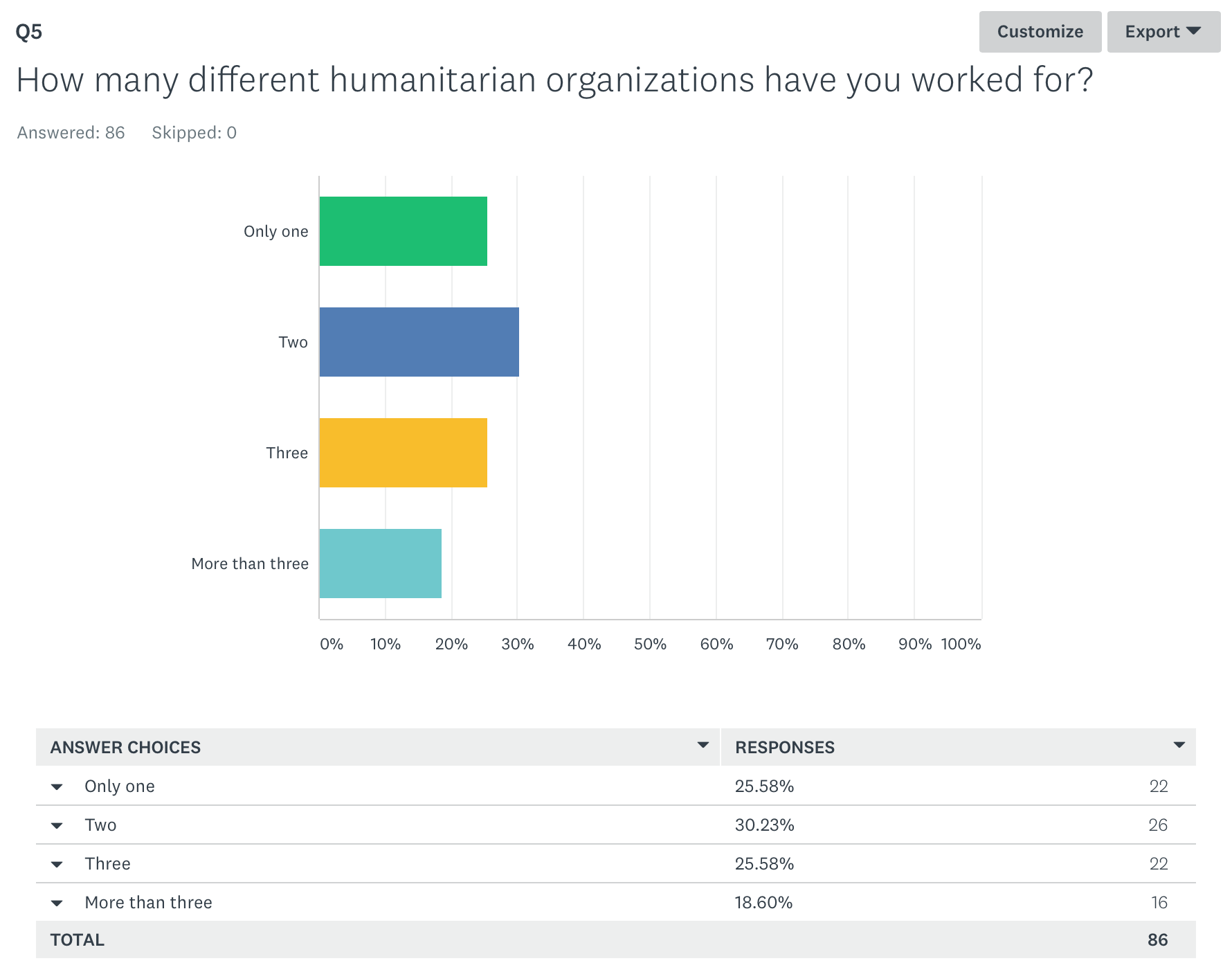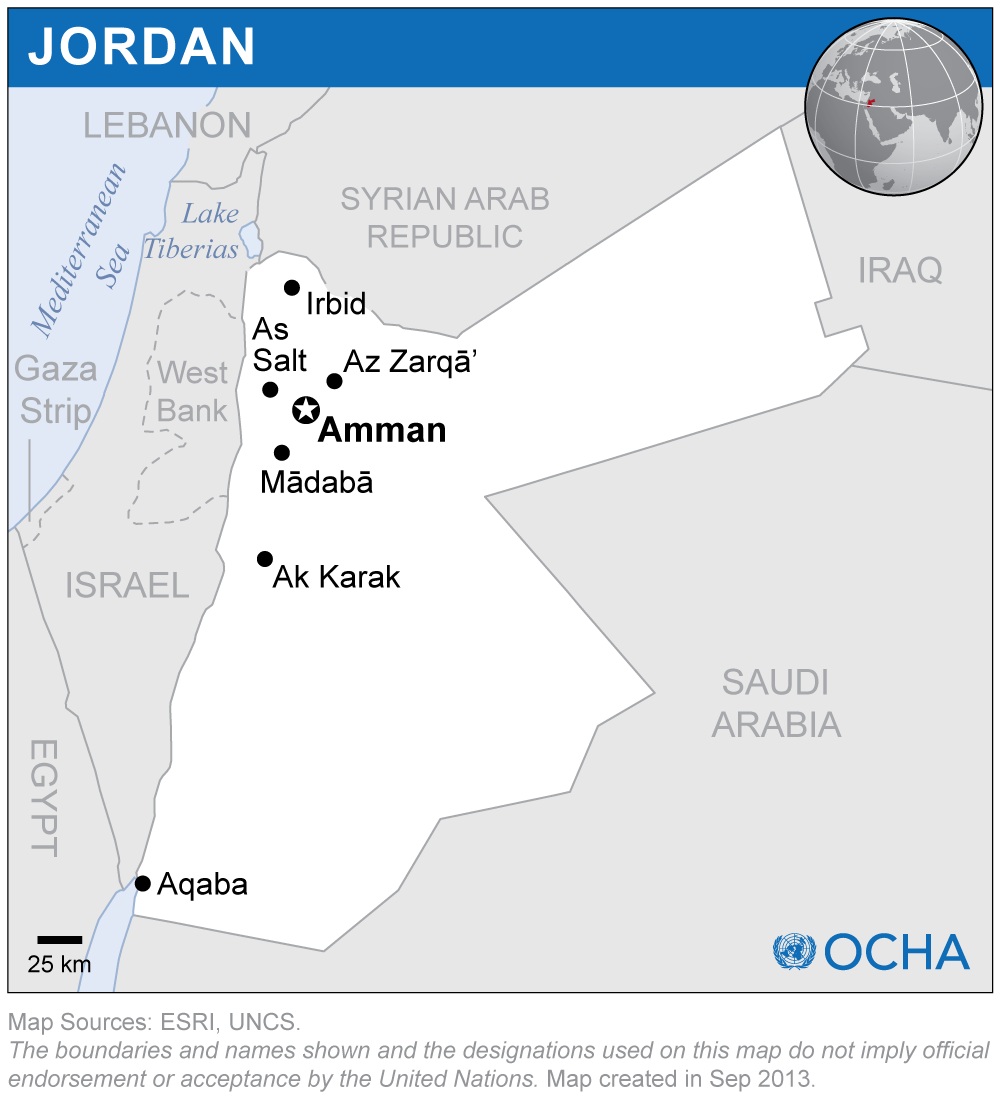Overview of the data: Jordanian Aid Workers عمال الاغاثة الانسانية الاردنية
Overview
Just over a year ago I began researching Jordanian aid workers with the goal of contributing to the dialogue about and the academic literature on ‘local aid workers’ in general and in particular national aid workers in Jordan, most of whom are dealing with the humanitarian crisis generated by the protracted war in Syria. See here for more background.
My research is based on (1) 23 interviews in person or over Skype with 11 different Jordanian aid workers and (2) an Internet based survey comprised of 43 questions.
A total of 86 individuals spent an average 15 minutes taking the survey, 73% completing all questions. Of the 43 questions, 13 were forced choice with no option for comment (mostly descriptive/demographic questions), 27 were forced choice with an option to comment, with the last three questions on the survey all open-ended. A total of 278 comments were offered by the respondents, with 122 of those coming on the last three open ended questions. Most comments were short, but several were detailed, offering useful insight into several issues. These qualitative data will be reported and analyzed in future posts.
Who were the respondents?
The vast majority were aid workers and/or insiders with in-depth knowledge of the sector in Jordan, and virtually all self-identified as Jordanian. Most were fairly new to the sector, with over 61% having five or fewer years of experience, leaving 39% with six or more years, 14% reporting more than 10 years experience. The modal respondent was female (66%), younger, between 26-35 (61%), and unmarried (64%). Worth noting is that 70% of the females indicated ‘unmarried’ as compared to a somewhat lower 52% of the males.
The vast majority of the respondents -92%- reported working for an INGO with headquarters based outside of Jordan (e.g., OXFAM). When describing the nature of their organizations work most -65%- indicated a mix of both relief and development, with an equal number -17% saying either mostly relief or development. Jordan has been absorbing refugees for over 70 years, and most recently the six year (plus) conflict in Syria has generated waves of individuals and families needing aid. The line between where relief work stops and development work begins is always blurry, both through the eyes of the aid organization staffers and those in the affected communities.

When asked how they spend their day as an aid or development worker, just more than half -52%- indicated a mix between working in ‘the field’ and working in the office. Only 9% reported working mostly in the field while 39% indicated in the office. That said, just as the line between aid and development can be blurred, my interview respondents said that the same holds true for the ‘field’ and ‘office’ distinction. Only a small percentage of the total affected population are in rural refugee camps, and thus the vast majority of ‘field’ work is done in and around Amman or in the other larger cities adds to that blurring.
When breaking down the data for this question gender differences did appear to be somewhat significant, with a higher percentage of males working in the field and, just the reverse, a higher percentage of females reporting working mostly in the office (by almost double, 24% males compared to 47% females).

Lateral movement common
Given those data, the next question “How long have you worked at your current organization?” had predictable results, with over 50% being in their current position less than two years.
The results of the next question surprised me a bit, and appear to paint a picture of the aid sector in Jordan as being somewhat fluid.

Just over 44% reported that they have worked for three or more different organizations. In interviews I talked with several younger aid workers for which going from one short term contract to the next was seen as a typical career trajectory, the hope being that one of the positions would be more permanent and/or have clear pathways for vertical movement. In between contracts other life options are explored, and for some leaving the sector altogether was a choice -a better job in line with their training, and for others it meant time for additional schooling (e.g., Masters or PhD level).
At least at first glance, the downside of this fluidity is that learning both the formal and informal norms and overall organizational culture of any aid organization takes time and resources for both the new staff person and those within the host organization tasked with bringing the new hire ‘up to speed’. As a basic fact, high staff turnover tends to be inversely correlated with organizational efficiency.
More posts on the remaining data are coming soon. In the meantime, if you have any questions or comments please email me. Follow me on Twitter (@tarcaro) for updates and comment.



 Follow
Follow